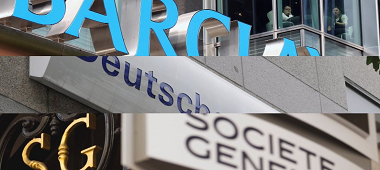from the International Monetary Fund
— this post authored by John Caparusso, Rohit Goel and Will Kerry
European banking has made considerable progress in the past few years: Banks have built up capital, regulation is stronger and supervision has been enhanced. But profitability remains weak, posing risks for financial stability.

In a sample of more than 170 large European lenders with combined assets of $35 trillion, roughly half generated a weak return on equity in 2016, and banks representing only 15 percent of assets generated a healthy return on equity, defined as more than 10 percent. Weak profitability is also shown in a low return on assets for domestic banks in many European countries. The drivers of these weak returns reflect varying combinations of low income, high costs, or provisions needed to build buffers against non-performing assets.
Impact on stability
The economic upturn in Europe should boost profitability as interest rates rise, loan-loss provisions fall, and lending opportunities increase. But the October 2016 Global Financial Stability Report found that a cyclical recovery is unlikely to be enough to fully restore bank profitability.
Why is low profitability a threat to financial stability? Consistently unprofitable banks are unable to build up reserves against unexpected losses and often find it difficult to raise capital in times of need. Weak returns also limit banks’ ability to expand lending and may induce banks to drive up returns by taking greater risks.
Does the problem lie in weak business models or structural features of the systems in which banks operate? Both are important. While business models underlie profitability problems in some institutions, consistently low returns across banks in some countries suggest that structural forces are also at work. This can be seen most clearly among domestic banks, where returns are most constrained by the characteristics of the home market. Almost three-quarters of these banks in our sample, by assets, had weak returns on equity in 2016, compared with less than 40 percent for internationally focused peers.













Leave A Comment